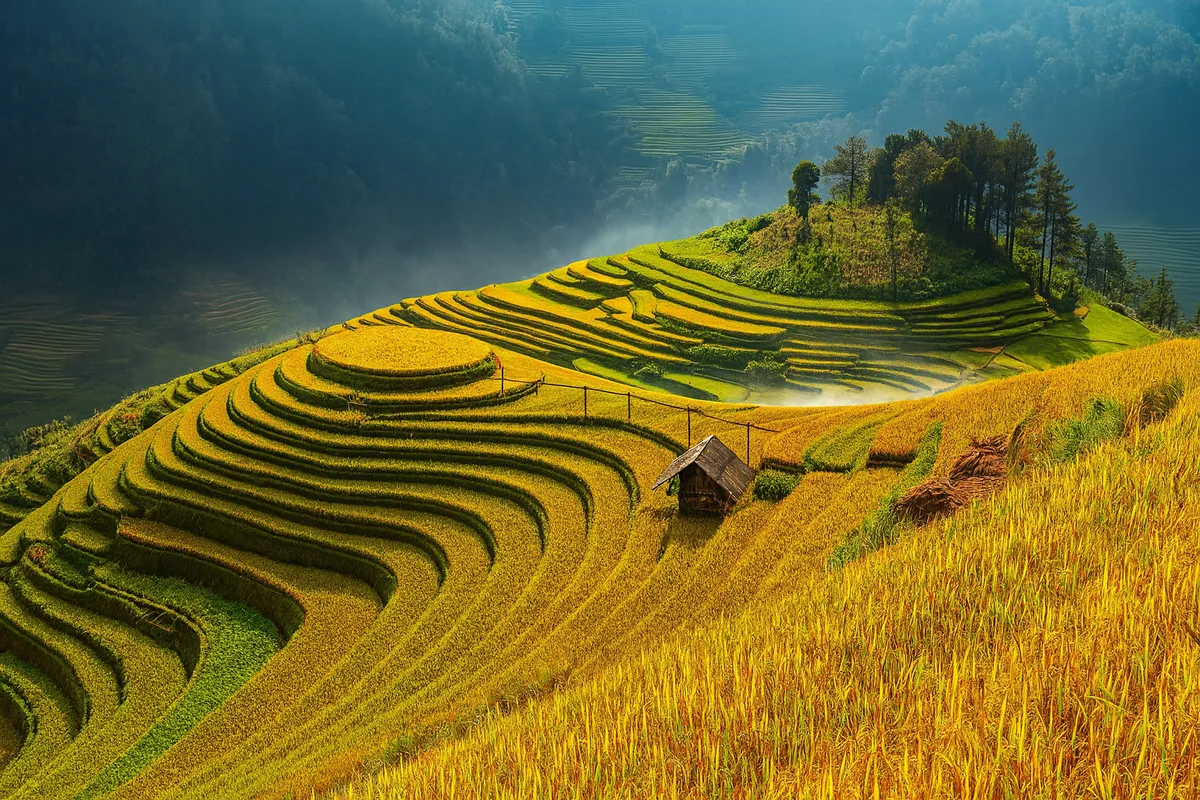Check-in 6 lush national parks in Vietnam
- Tuesday, Jun 10, 2025, 15:16 (GMT+7)
Check-in 6 lush national parks in Vietnam
Amid the hustle and bustle of city life, more young Vietnamese travelers are choosing to leave behind the concrete jungle in search of something purer. This journey no longer stops at beaches or famous tourist cities. Instead, it takes a deep turn into the forest. Vietnam’s lush national parks are becoming magnetic destinations, not only because of their breathtaking nature but also for the chance to breathe deeply among ancient trees, listen to the rustling leaves, and slow down the heartbeat to match the rhythm of the earth.
Vietnam is home to more than 30 national parks, stretching from north to south, each offering a distinct atmosphere shaped by its climate, ecosystem, and local culture. But what they all share is the experience of immersive stillness within pure greenery, without ever having to cross a border.
In the north, Ba Vi National Park lies just 60 kilometers from Hanoi, making it a perfect starting point for first-time forest explorers. With diverse vegetation, cool weather all year round, and moderate trekking trails, Ba Vi is easily accessible but still holds a sense of mystery. Many visitors have found that just a two-kilometer detour off the main tourist trail leads to absolute silence, where all noise is swallowed by layers of forest canopy.
Not far from the capital is Cuc Phuong, Vietnam’s oldest national park. Its value lies not just in scenic beauty but in its rich biodiversity and active conservation efforts. One of the most rewarding experiences is reaching the Cave of Prehistoric Man, where ancient human remains were discovered, or joining a night walk to observe primates in their natural habitat. Few travelers know that during April and May, the park is enveloped in clouds of white butterflies, turning ordinary paths into dreamlike corridors of fluttering wings.
Moving down to central Vietnam, Bach Ma National Park sits between Hue and Da Nang, where tropical and temperate climates meet. This is one of the rare places where a few minutes of uphill hiking can lead to walking through clouds. The panoramic viewpoint Vong Hai Dai offers sweeping views of ocean on one side and emerald valleys on the other. On clear mornings, lucky trekkers may catch glimpses of the white-cheeked gibbon swinging through the mist. A tip passed around trekking groups is to start the climb before 6 AM for the best views and to avoid clouds that often roll in by late morning.
In the Central Highlands, Chu Yang Sin National Park in Dak Lak stands out for its rugged terrain and high-altitude trails, ideal for multi-day treks. It is a real challenge for those who seek dense jungle paths and untouched nature. Photographers often target Dray K’nao waterfall, where filtered sunlight creates cinematic beauty through the trees. Though the journey is demanding, most visitors agree that it is worth the effort, as long as they prepare physically and bring proper gear.
In the south, Nam Cat Tien National Park is particularly suitable for families or beginners. The appeal here lies in organized wildlife observation and biking routes through the forest. Observation towers, night safari stations, and botanical gardens are carefully managed. Experience shows that joining a ranger-guided tour greatly increases the chance of spotting rare animals like civets, wildcats, or even Siamese crocodiles at Bau Sau wetland. A lesser-known tip is to bring a long-range binocular and use a red flashlight at night, which avoids startling animals and helps maintain visibility.
Among the most memorable destinations is Tram Chim National Park in Dong Thap, a prime example of wetland ecosystems. It is best visited during the high-water season from August to November on the lunar calendar. Tens of thousands of migratory birds gather here, including the rare red-headed cranes. Visitors can take wooden boats through flooded cajeput forests or photograph sunrise over vast open fields glowing in orange mist. The ideal time to visit is one or two days after rainfall, when the water is clear and the birds are easier to spot. Avoiding windy days also improves the viewing experience.
To fully enjoy a national park journey, travelers should pack light, wear shoes with strong grip, and prepare for sudden weather changes. Phone signals often drop deep in the forest, so offline maps, backup power, a flashlight, and a whistle are must-haves. Going alone is not recommended. A group of three to five is optimal for support. For more remote trails like Chu Yang Sin peak or the full Cuc Phuong circuit, prior registration with park authorities is essential.
Insights from eco-tourism communities show that travelers aged 25 to 35 are leading this forest travel trend. They often combine nature exploration with sustainable lifestyles. Rather than choosing hotels, they prefer forest-side homestays and take part in local activities such as planting trees, learning to cook traditional meals, or making crafts from natural materials. This mindset shift turns green tourism from a short-term trend into a long-term value system.
One interesting tip shared by experienced travelers is to carry a small notebook to jot down new plant species, distinct forest sounds, and personal observations. This not only creates deeper engagement but also helps them share their journey in a vivid and practical way. Some even practice walking meditation during their hike, combining physical activity with mindfulness to elevate the experience.
Checking into a national park is more than ticking off a location. It is about reconnecting with nature in its rawest form, with the breath of the soil and the heartbeat of the trees. When leaving the forest to return to the city, what stays is not just the memory of beautiful photos but a sense of inner renewal. That, above all, is the reward that only those who have walked under mossy canopies and listened to the forest’s silence can truly understand.

 CHECKIN.VN
CHECKIN.VN








Share on